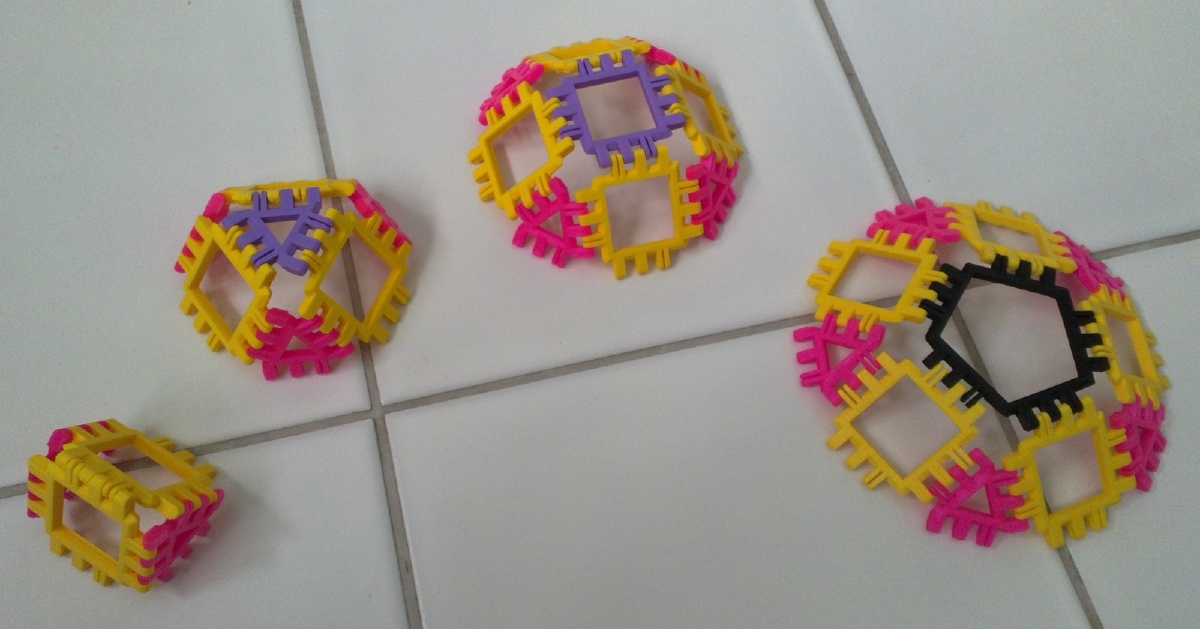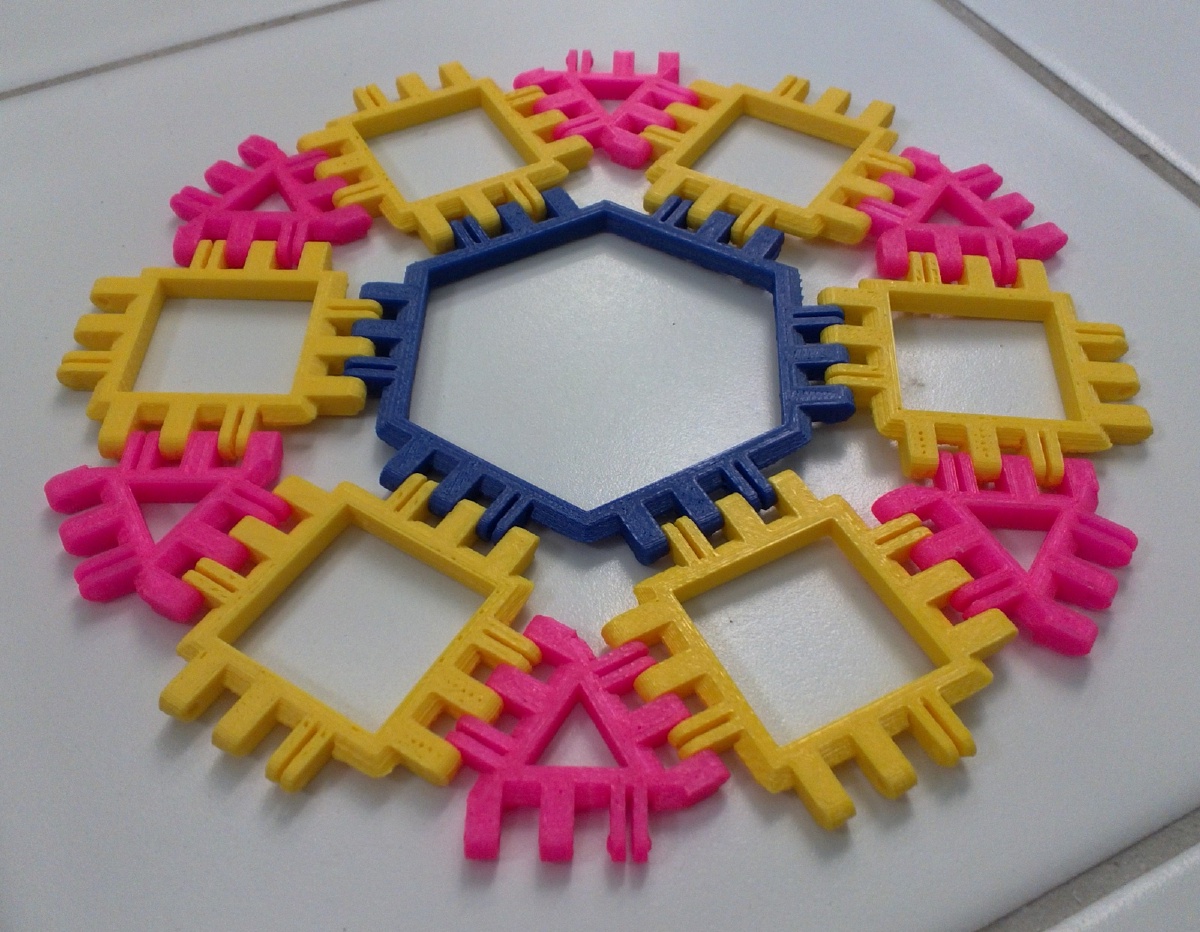The Cupola
Starting with a regular $n$-gon in the center, we attach a square on each side. Next we fill the gaps between the squares with equilateral triangles. Then we finish the solid by inserting a regular $2n$-gon in the bottom. The next image shows some cupolas for different $n$ but without the closing bottom face.

In this post I’d like to study some of the geometrical properties of cupolas like height and volume. Interesting questions arise especially with respect to varying $n$.
The height $h$ of a cupola with central polygon having $n$ sides is given in the following table:
| $n$ | $h(n)$ | $h(n)$ |
|---|---|---|
| $1$ | $\tilde{\infty}$ | $\tilde{\infty}$ |
| $6 / 5$ | $0$ | 0.0 |
| $2$ | $\frac{\sqrt{3}}{2}$ | 0.866025403784439 |
| $3$ | $\frac{\sqrt{6}}{3}$ | 0.816496580927726 |
| $4$ | $\frac{\sqrt{2}}{2}$ | 0.707106781186548 |
| $5$ | $\frac{\sqrt{3 - \sqrt{5}}}{\sqrt{5 - \sqrt{5}}}$ | 0.525731112119134 |
| $6$ | $0$ | 0.0 |
| $7$ | $\frac{1}{2}\sqrt{4 - \csc^2\left(\frac{\pi}{7}\right)}$ | 0.572699989179048 $\imath$ |
| $8$ | $\frac{\sqrt{1 - \sqrt{2}}}{\sqrt{2 - \sqrt{2}}}$ | 0.840896415253715 $\imath$ |
The following image shows a cupola with $n = 6$ which lies flat on the floor. (This is expected because this pattern forms the basis of the rhombitrihexagonal tiling, a semiregular tiling of the Euclidean plane.)

The general formula for any $1 \leq n$ is:
$$ h(n) = \frac{a}{2} \sqrt{4 - \csc^2\left(\frac{\pi}{n}\right)} $$
where $a$ is the length of any side. Only for $2 \leq n \leq 6$ the height is finite and real valued. The next image graphs the height in dependence on $n$.
The derivation is as follows. Let $r_i(n)$ be the inradius of the inner $n$-gon and $r_i(2n)$ be the inradius of the outer $2n$-gon boundary. We know that:
$$ r_i(n) = \frac{a}{2} \cot\left(\frac{\pi}{n}\right) $$
hence:
$$ \Delta r (n) = r_i(2n) - r_i(n) = \frac{a}{2} \left( \cot\left(\frac{\pi}{2n}\right) - \cot\left(\frac{\pi}{n}\right) \right) . $$
The height $h(n)$ then follows from the Pythagorean theorem:
$$ h(n) = \sqrt{a^2 - \Delta r(n)^2} = \frac{a}{2} \sqrt{4 - \csc^2\left(\frac{\pi}{n}\right)} . $$
